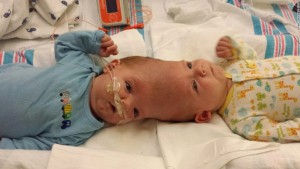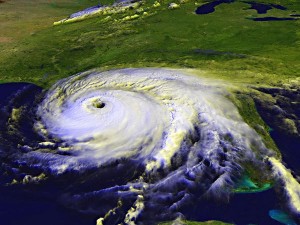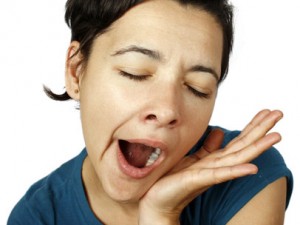While I was home last weekend, I saw an amazing story on the news. It was about the successful separation of two conjoined twins at Montefiore Hospital in the Bronx. It made me want to learn more about the back story surrounding these twin boys.
The McDonald boys, Anias and Jadon, were born to parents , Nicole and Christian, on September 9, 2015. But these parents’ fear and anxiety began in May, 2015, when following a routine sonogram, they learned that not only were they having twins, but that they shared a head. Although the family briefly considered termination for the sake of the children, they knew in their hearts that these twin boys were meant to be theirs. They knew that their lives would be forever changed, and they set out to learn about the condition and what they were to expect in the future.
Twins conjoined at the head, known as craniopagus twins, only occur in one out of every 2.5 million births. Many children don’t survive the birthing process, and of those who do, only about 20 percent survive past their second birthdays if not separated. It is traumatic for the two babies to share an organ, especially one as important as the brain. So, what was the family to do? Prior to the mid-1980’s , separating these types of conjoined twins often relied upon saving the stronger twin at the sacrifice and death of the weaker one. It was not at all uncommon for both babies to die, or for the stronger twin to suffer tremendous brain damage.
So , this family set out to find the best possible doctor and team to perform this incredibly difficult surgery – and they did. They discovered Dr. James T. Goodrich at Montefiore Hospital in the Bronx. He is known as the doctor who has pioneered the field in the separation of craniopagus twins. Through his work , he has discovered that the odds of saving these babies increases if he breaks down the procedure into several smaller procedures. Otherwise, these twins are left facing a fifty hour surgery. There have only been 59 craniopagus separation surgeries performed in the world since the early 1950’s and Dr. Goodrich has performed seven of them. The McDonalds moved their family from Illinois to the Bronx to be able to work with Dr. Goodrich and his team. The twins proceeded to have three operations to begin the separation process for their shared brain. Various vessels were separated and spacers were slowly inflated in their heads to stretch the skin to cover the skulls when they were finally separated.
On Thursday, October 13, 2016, however, the doctors and the twins underwent a huge surgery to separate the remaining brain tissue and their heads. In preparation, the surgeons studied several 3-D models of the twins’ heads, brain, and vessels. Dr. Goodrich worked closely with plastic surgeon, Dr. Oren Tepper, who was responsible for reconstructing and closing the twins’ heads. Following two hours of prepping , these conjoined twins were on their way to being separate for the first time. Five surgeons worked tirelessly for over sixteen hours, cutting and separating vessels and tissue, turning the conjoined twins carefully, until these two, small boys who were always together, were finally apart. The final stages of the surgery were harrowing for the surgeons. They had to deal with tiny blood vessels that were intricately intertwined and susceptible to heavy , uncontrollable bleeding. Unfortunately for the boys and their family, this was only the beginning. Each twin, now separated, had to undergo many more hours of surgery to repair their skull caps and skin.
The boys both survived the surgery, although Anias has had some post procedure complications. But no one, including the doctors can predict exactly what long term consequences there will be to separating and removing portions of their brains. The boys remain under heavy sedation for the time being, but will eventually have to learn how to sit up, crawl, and possibly walk. Their future is uncertain, but this surgery has definitely increased their odds of survival. The family continues to rely on their faith and the prayers of the world to pull these boys through.

Link photo 1 : https://goo.gl/images/HXbvf6
Link photo 2: https://goo.gl/images/awBBO6
Link photo 3: http://www.cnn.com/2016/10/14/health/conjoined-twins-separation-surgery/












